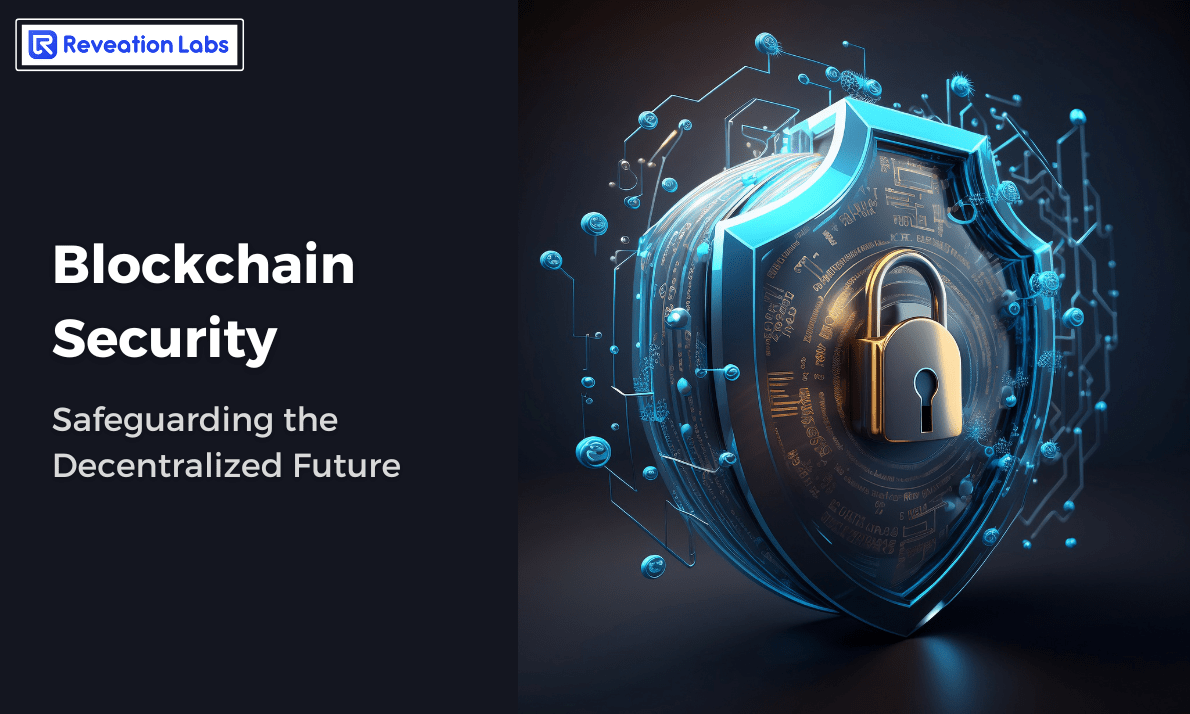Jhansi Pothuru
Wed Aug 02 2023


Introduction
Through its decentralized and immutable ledger system, blockchain technology has brought about a revolutionary impact on numerous industries. Its applications range from cryptocurrencies to supply chain management, from decentralized finance to voting systems.
However, the rising popularity of blockchain has also attracted the attention of cybercriminals and led to many fraud cases by attacks on blockchain. According to statistics, hackers managed to steal cryptocurrency valued at $4.3 billion between January and November 2022, reflecting a 37 percent increase compared to the previous year.
A recent crypto scam worth Rs 500 crores was exposed, where victims were lured with promises of 200% returns. These cases persist, and if you aren't cautious, you could be the next target!
So, In this article, we explore the key principles and best practices for securing blockchains against potential threats.
Suggested: How AI and Blockchain are Transforming Industries
Types Of Attacks And Its Solutions
1) 51% Attacks
A 51% attack occurs when an attacker gains control of more than 50% of a blockchain network's computing power, enabling them to manipulate transactions and even double-spend coins. This attack vector targets proof-of-work (PoW) blockchains, where computational power determines consensus.
A successful 51% attack can have severe consequences for a blockchain network. The attacker can reverse transactions, making them invalid, or create new transactions, effectively double-spending their coins. These actions weaken the integrity of the blockchain and diminish the trust users have in the system.
Solution: To counter 51% of attacks, blockchain networks can adopt various mechanisms and strategies. One approach is to increase the network's overall computing power by encouraging more nodes to participate in the consensus process. A larger and more distributed network is harder to manipulate.
Another solution lies in implementing a multi-algorithm consensus mechanism. Instead of relying solely on PoW, blockchain networks can incorporate additional algorithms that increase the cost and difficulty of mounting a 51% attack. By diversifying the consensus mechanism, the network becomes more resistant to manipulation.
2) Smart Contract Vulnerabilities
Smart contracts are self-executing contracts with predefined rules and conditions. These contracts run on the blockchain, enabling decentralized applications (DApps) and automated interactions between parties. However, coding errors or vulnerabilities in smart contracts can lead to catastrophic consequences.
Fraudsters often exploit these vulnerabilities to manipulate smart contract outcomes or extract funds from poorly written contracts. These attacks caused substantial financial losses and damaged the reputation of blockchain projects.
Solution: Auditing smart contracts is a critical step in identifying and mitigating vulnerabilities. Blockchain developers and organizations can seek the assistance of security experts who specialize in reviewing smart contract code for potential flaws.
Apart from auditing, developers should follow best practices when writing smart contracts. This includes using well-established libraries and frameworks, conducting comprehensive testing, and employing formal verification techniques to mathematically prove the correctness of the contract's logic.
3) DDoS Attacks
Distributed Denial of Service (DDoS) attacks are a common threat to blockchain networks. In a DDoS attack, malicious actors overwhelm a network's resources by flooding it with a massive volume of fake requests. As a result, legitimate users are denied access to the network, and regular operations are disrupted.
DDoS attacks pose a significant risk to blockchain networks as they can compromise network stability and lead to temporary or prolonged downtime. Not only does this hinder the user experience, but it also opens up opportunities for other types of attacks.
Solution: To defend against DDoS attacks, blockchain networks can deploy robust DDoS mitigation services. These services employ advanced algorithms to identify and filter out malicious traffic, allowing legitimate requests to reach the network without interruption.
Furthermore, blockchain networks should adopt scalable infrastructure to handle sudden spikes in traffic. By distributing network resources across multiple nodes and data centers, the impact of a DDoS attack can be minimized, ensuring continued accessibility and functionality.
4) Sybil Attacks
In a Sybil attack, fraudsters create multiple fake identities or nodes to gain control over a significant portion of the network. This manipulation can lead to a distorted consensus and jeopardize the integrity of the blockchain.
In decentralized networks, identity verification is challenging, making it easier for attackers to create a large number of fake identities and exert influence over the consensus process. This undermines the decentralized nature of blockchain and allows bad actors to exert undue control.
Solution: Preventing Sybil attacks requires the implementation of decentralized identity protocols. While complete anonymity is a fundamental aspect of some blockchain projects, others may require a degree of identity validation to participate in the consensus process.
Proof-of-stake (PoS) mechanisms can also be employed to counter Sybil attacks. In PoS, the probability of being chosen to validate transactions is directly proportional to the number of coins a node holds and "stakes" in the network. This approach incentivizes honest behavior, as a node with a significant stake is less likely to engage in malicious activities that could compromise the value of its assets.
5) Malware and Phishing
Blockchain users are susceptible to traditional cyber threats, such as malware and phishing attacks. These tactics trick individuals into revealing sensitive information and gaining unauthorized access to private keys or wallets.
Phishing attacks often involve fraudulent websites or emails that imitate legitimate blockchain services. Unsuspecting users may unknowingly provide their private keys or login credentials, giving attackers control over their assets.
Solution: Educating users about best security practices is essential to combat malware and phishing attacks. Blockchain service providers should proactively communicate with their users, warning them about potential threats and advising on precautionary measures.
Hardware wallets are another effective solution to protect users from malware attacks. These physical devices securely store private keys offline, reducing the risk of exposure to malicious software on a user's computer or mobile device.
Moreover, implementing multi-factor authentication (MFA) adds an extra layer of security to user accounts. MFA requires users to provide multiple forms of identification before accessing their accounts, making it significantly harder for attackers to gain unauthorized access.
6) Insider Threats
Insider threats are a significant concern for blockchain projects and organizations. Malicious actors with privileged access to the blockchain network or development team can exploit their position to compromise the system, steal sensitive data, or misappropriate funds.
Blockchain projects often involve a close-knit community of developers, contributors, and stakeholders. While this fosters collaboration and innovation, it also creates opportunities for insider attacks if proper security measures are not in place.
Solution: Insider threat mitigations require a combination of technical and organizational measures.
Conducting thorough background checks on employees and contributors before granting them access to sensitive information can help identify potential risks early on. Additionally, organizations should establish a system of checks and balances, ensuring that no single individual has unchecked authority over critical processes.
Regular monitoring of network activity and access logs can help identify suspicious behavior and potential signs of insider threats. This includes analyzing login patterns, transaction history, and other network activities for any abnormal activities.
Conclusion
Blockchain technology holds tremendous transformative potential, but ensuring its sustained growth and adoption requires a strong focus on securing the ecosystem.
Understanding fraudster tricks & tactics and implementing innovative solutions are essential. Collaborating among developers, users, and security experts builds a robust and trustworthy blockchain landscape.
Are you looking for someone to assist you with blockchain services, ensuring top-notch security measures, and can boost your business as well? Why not explore our range of services?

Why Reveation Labs
We are a team that is technically proficient and simultaneously caring for your business. Our ideology is to provide the latest technologies that suit your business well.
Let’s discuss your requirements!
Give your business the next-gen technology it deserves. Be a part of our family of successful enterprises that work on high-end software solutions.
Experts
In all the latest technologies and developments.
Creative
To innovate the best solutions and pick the right technology for you.
Ethical
To always put you first & respect your business values and procedures.
Dedicated
To meet the deadlines and help you until the very end and beyond.
Approachable
For all your business needs and queries at any point of time.
Transparent
In our ways of working.




